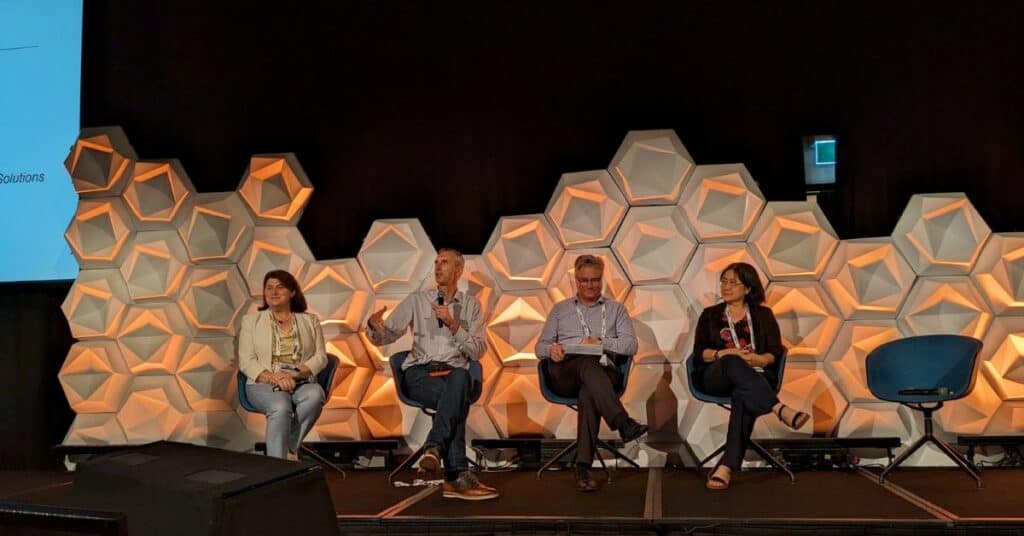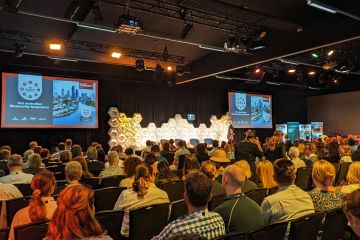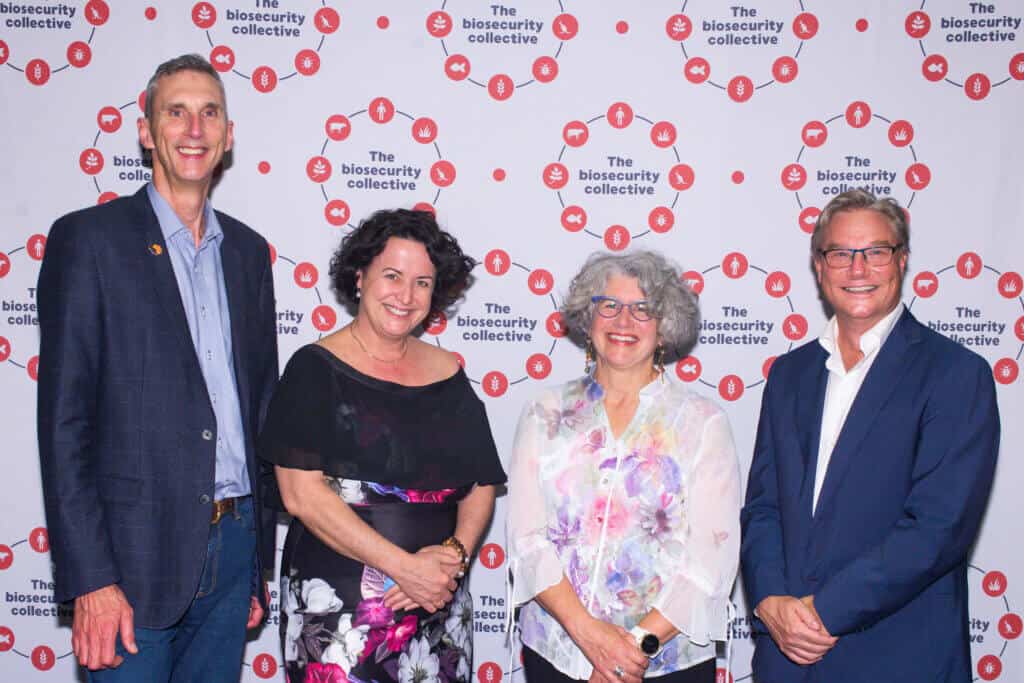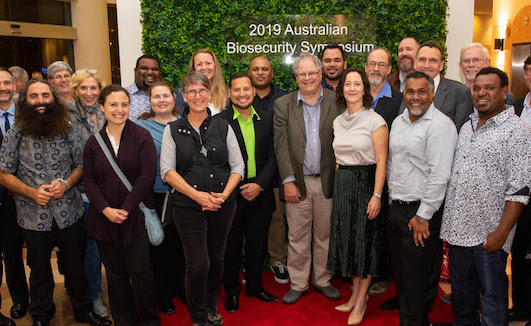Held at the iconic SeaWorld Resort on the Gold Coast from August 27-29, this year’s Australian Biosecurity Symposium was nothing short of groundbreaking! With the theme of ‘Innovation. Inclusivity. Immersion,’ over 430 of Australia’s brightest minds and trailblazers came together to hear 128 speakers tackle one of the most critical issues we face: strengthening Australia’s biosecurity.
A standout presentation was from Tinkerbell founder, Adam Ferrier. In his keynote address he challenged those working in biosecurity to better define the biosecurity brand so that it’s more recognisable. With biosecurity being a relatively new concept, this will be essential if we are to build an Australian biosecurity mass movement.
This symposium included the inaugural Biosecurity Youth Summit with 40 high school students from around Queensland learning about the importance of a strong biosecurity system. These future leaders shared their visions with the full plenary.
The two-day event was cohosted by the Biosecurity Collective – an initiative of Animal Health Australia , Invasive Species Council, Centre for Invasive Species Solutions and Plant Health Australia.
The Symposium coincided with the inaugural National Biosecurity Week, which promotes the critical role biosecurity plays in protecting our environment, agricultural industries, food supply, communities and economy.

Key initiatives to be progressed by the Biosecurity Collective following the Symposium include:
- Advancing the Parliamentary Friends of Biosecurity
- Expanding National Biosecurity Week
- Enhancing youth engagement
- Doubling investment in biosecurity for sustained transformation
- Defining a powerful national biosecurity brand.
The Symposium was an idea originally conceived by the Invasive Species and brought to reality through a partnership with Animal Health Australia who were responsible for event management for the first two events. The critical drive and leadership from former Animal Health Australia CEO Kathleen Plowman was recognised at the 2024 symposium with Kathleen’s designation as a ‘founding partner’.
The Biosecurity Collective will reconvene in 2025 to conduct a mid-decade review of our biosecurity system, to determine if it is ready for the challenges of 2030 and beyond. The next symposium will be held in 2026.




